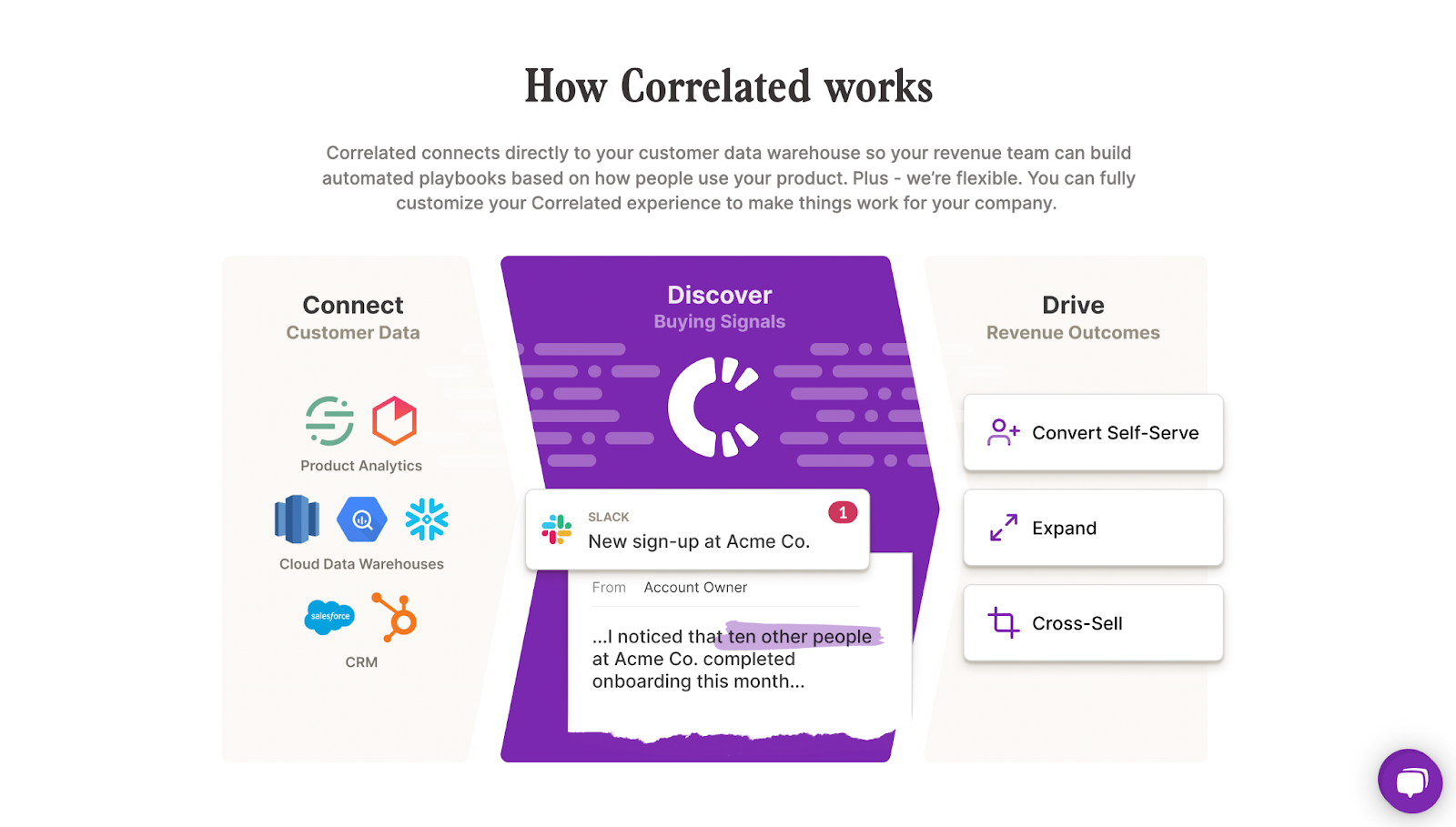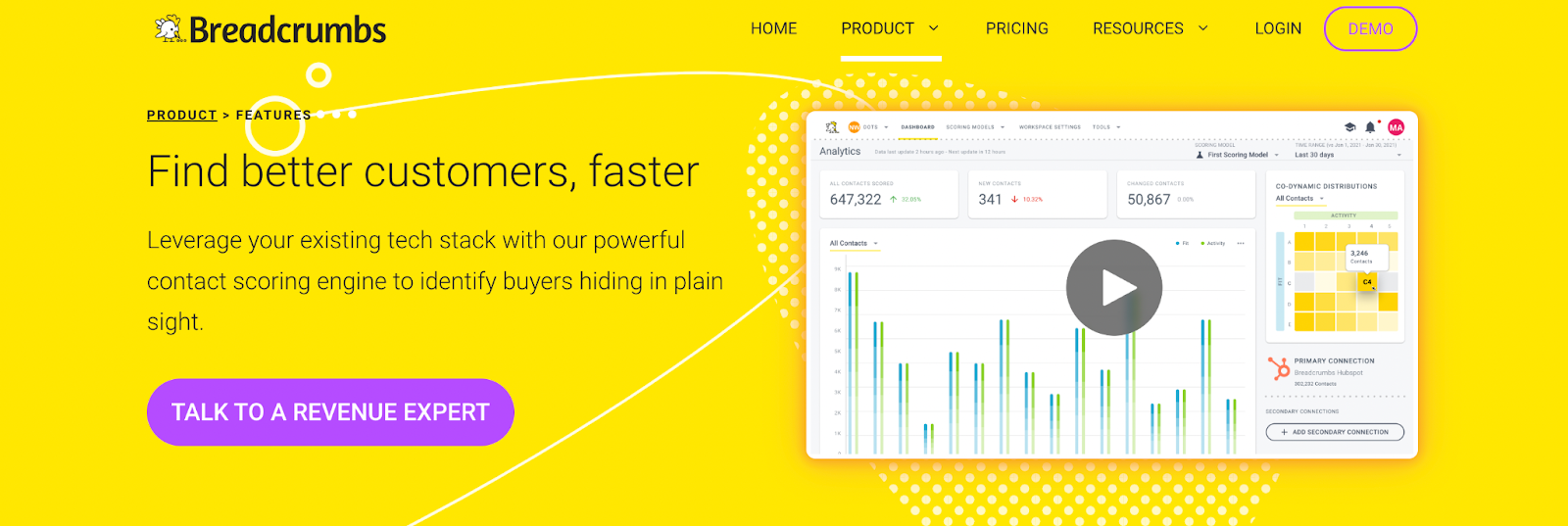An Intro to a Product-Led Sales Motion

CEO, Co-Founder
Product led sales (PLS) has become an increasingly important aspect of many SaaS companies’ sales motions.
Whereas software companies used to sell their products solely to CIOs or CTOs for company-wide deployment, many have shifted to selling to end-users – with much success.
The main differentiator is that PLS takes a customer-centric, bottom-up approach, viewing end users as the primary prospect. As opposed to the traditional top-down sales motion, PLS relies on the product itself to lead the company’s growth.
Product led sales also aims to reduce friction from the sales cycle by giving prospects the opportunity to educate themselves on the product, rather than needing a salesperson to walk them through it. It also relies on the product itself to generate new leads, conversions and revenue.
In this article, we’ll cover what a product-led sales motion is, when it can be implemented successfully, and who can benefit from integrating it into their overall growth strategy.
What is product led sales (PLS)?
A product-led sales (PLS) strategy is used when companies give prospects the opportunity to explore, try and purchase a product on their own – without requiring the involvement of a sales person upfront.
Simply put, a PLS motion prioritizes the customer’s hands-on experience with software so that they can experience it earlier in the sales cycle before they speak with a sales person.
How is product-led sales different from previous ways of selling?
At its core, PLS addresses customers’ growing desire to control their interactions with a product, rather than waiting for a salesperson to get any insight into the product.
It’s different from a traditional sales motion because it relies on customers having found the product on their own (either through an invite from a colleague, a recommendation, an online search, etc.) and discovered its value (by doing a free trial, freemium, etc.) in order to convert into a paying customer.
In the past, sales-led selling motions required a salesperson to help the customer navigate the purchasing experience, yet a product-led selling motion empowers the customer instead. It puts buyers in control of their own journey.
The customer’s initial focus will be on extracting value from the software before deciding whether or not to buy, effectively self-educating and selling themselves on a product without a salesperson’s nurturing.
How can a SaaS company best transition to product-led sales?
Prioritizing the end-user in the sales cycle is vital to building strong, long-lasting business relationships with customers and winning deals in the end.
By transitioning to a product-led mindset, SaaS sales and marketing teams can position their companies to scale rapidly in large markets when traditional sales processes would hinder the pace of progress.
But building a product-led sales motion doesn't have to take months with options such as product videos or interactive product demos.
Who does product-led sales work for?
While many SaaS companies are transitioning to product led sales not all companies are primed to switch.
Products that are complex may not be ideal for a traditional PLS strategy through free trials or freemium offerings. This includes products that take a long time to set up and have an above-average time-to-value metric.
Instead, a product led sales motion works well for products that are easier to configure, intuitive to use and focused on solving a specific issue. However, there are ways more complex products can adopt a PLS motion – more on that to come.
Companies that have had immense success with a PLS motion include Asana, Monday.com, Slack,and DropBox.
Benefits of a PLS motion
Better time-to-value for end-user: A product led sales motion removes middle-steps in the sales process, like speaking with a representative and booking a demo. Rather, it works by allowing customers to evaluate the product much sooner in the buying cycle.
Once customers find value in the product, they essentially onboard themselves. This process makes the time-to-value more effective for the end-user.
Shorten the deal cycle: A PLS motion shortens the deal cycle because sellers don’t need to go through the standard selling pitch to convince prospects to buy. The prospects have already experienced the product and are primed for sales.
Higher quality leads who are familiar with your product: Through self-education, prospects are more familiar with the product, leading to higher quality leads. This saves time for sellers having to show prospects the value of their product.
Drawbacks of a PLS motion
If your product is too complex: An incredibly complex product may not do well on a PLS motion. Prospects might explore your product and become frustrated with its intricacies.
This is where you might want to consider adding a sales-assist team to help with moments of friction your prospects may be experiencing (more about this later).
Requires engineering resources: Not all companies can transition to PLS, because they simply don’t have the engineering resources to do so.
This is where self-guided product demos can help. This is one of the ways companies can jump-start PLS without needing an engineering team to give prospects a hands-on product experience.
How to implement a product led sales (PLS) strategy
1. Discover your product’s a-ha moments
An a-ha moment is a moment when a user is exploring your product and suddenly discovers a benefit or feature that makes everything “click” for them. It’s the moment they unlock the true value your product has to offer for them.
Understanding where and when these moments happen is crucial when you’re in the early stages of implementing a PLS strategy. You can uncover these by interviewing your beta users or observing them as they interact with your product.
Once you know which benefits and features are most captivating for your users, you can use this information to inform and test your marketing, sales and onboarding strategies. For a PLS strategy to be successful, you want to move your prospects to value – or to an a ha moment – as quickly as possible.
2. Let prospects get hands-on with your software
As we mentioned previously, it’s important to allow prospects to have a first-hand experience with your product early in the sales motion. There are a few ways you can do this:
Free trial
A free trial gives prospects a timed opportunity to explore your product and assess if it meets their needs. From there, you can move prospects down the sales funnel, converting them to paying customers.
Pros of a free trial:
- Users can explore your product’s features and values before committing.
- Because a free trial is timed, this creates a defined period of time for you to support onboarding.
Cons of a free trial:
- Free trials aren’t free for the vendor. Overhead costs still continue regardless.
- Free trials may not work with products that are complicated or difficult to set up.
Freemium
Freemium – or free tier offering – is when a vendor offers basic features of the product for free. The main goal is to sign up prospects, who can then be assessed and targeted for focused upselling.
Pros of freemiums:
- Easiest to build trust and demonstrate the value of your product.
- Onboarding can be quick and easy, moving customers down the funnel through upselling.
Cons of freemiums:
- Overhead costs may be higher as freemiums may not always convert users to paid subscribers.
- Can be more difficult to control user abandonment.
Interactive product demo
Interactive product demos walk prospects through the main features of your product.
Product demos give users guidance and show them how the product operates, allowing them to see how it will integrate into their workflows.
It’s important to be strategic about how you build and implement your interactive product tour or demo.
Pros of product demos:
- They don’t require the prospect to set up an account, so value can be seen immediately.
- They can be personalized for important accounts with a simple screen editor.
Cons of product demos:
- Product demos are purposefully guided so the users can’t experience your entire platform.
- If your application relies on real time data, this will not show in a product demo.
3. Consider a sales-assist role
Although PLS diminishes the reliance on sales upfront, it doesn’t mean you have to do away with your sales team. Many prospects will still need a human touchpoint. This is where a sales assist role can help.
A sales-assist role is someone who can help customers in their journey. By answering questions, smoothing over friction points, and guiding prospects down the sales funnel, they accelerate revenue for important opportunities.
They can also provide education and enablement support, and are helpful when activating a feedback loop from customers to the product team.
As a result, the sale-assist role is becoming increasingly important for product led companies.
4. Shift from an MQL/SQL mindset to a PQL one
Shifting your focus from attracting marketing/sales qualified leads (MQLs/SQLs) to product qualified leads (PQLs) will help your overall conversion rates.
Product-qualified leads are users who have reached key product milestones, indicating they understand the value your product offers.
Where once prospects were qualified through traditional blogs, podcasts, your website, and so on, qualifying prospects through product engagement moves them down the sales funnel, faster and more efficiently.
Data from OpenView has even indicated that conversion rate for PLQs can be up to 15-30% higher than leads qualified through traditional methods.
Top product led sales tools
Becoming a PLS company takes some effort, but there are tools that can help. Here are some that can help transition to and streamine PQLs
Pocus
Pocus is a PLS platform that analyzes user data and gives insights into ways companies can leverage existing users as the primary funnel for sales and marketing. It’s a Product-Led Sales platform for modern go-to-market teams. You can sign up here.

Correlated
Correlated is a PLG platform that takes user data and turns it into actionable playbooks that align with sales and marketing. It’s the automation platform for product led revenue. Sign up for a free trial here.

Breadcrumbs
Breadcrumbs is a platform that analyzes user data and creates actionable scoring models that can help identify revenue opportunities. Breadcrumbs is designed to support PLS motions and identify qualified prospects. Book a free demo here.

Falkon
Falkon is a revenue analytics engine that can help you find users who are ready to activate, convert, or expand. Falkon uses a success-based model built around how your best existing customers actually behave and have behaved in the past. Try Falkon here.

—
Prioritizing the end-user in the sales cycle is vital to building strong, long-lasting business relationships with customers and winning deals in the end.
By transitioning to a product-led mindset, SaaS sales and marketing teams can position their companies to scale rapidly in markets when traditional sales processes would hinder the pace of progress.